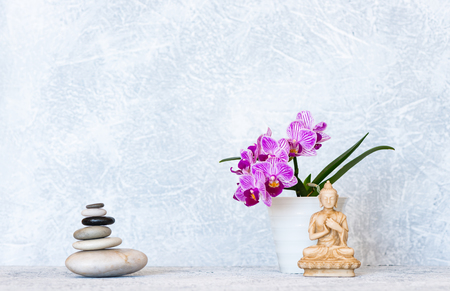Introduction to Home Alignment Concepts
The orientation of our homes has long been a subject of both practical and philosophical interest across civilisations. In particular, the ways in which Classical Chinese and Western cultures have approached home alignment reveal much about their broader worldviews and values. From the ancient streets of Changan to the leafy avenues of Georgian London, people have sought methods to ensure that their dwellings are harmoniously positioned within their environment. This introductory section delves into the historical and cultural significance of home alignment, laying the groundwork for a comparative exploration of compass techniques as developed in these two enduring traditions. Whether shaped by geomantic principles or guided by magnetic north, the choices made in orienting a home reflect deeper beliefs about nature, society, and well-being that continue to resonate in contemporary architectural practice.
2. Principles of Classical Chinese Compass Techniques
The origins of the Luo Pan, or Chinese compass, can be traced back to ancient dynasties where geomancy, or Feng Shui, played a pivotal role in home and city planning. Unlike the Western approach, which often prioritises magnetic north and practical orientation, the Luo Pan is deeply embedded in a holistic worldview that connects human life to the cosmos. Its methodology is intricate, combining astronomy, geography, and philosophy. The Luo Pan itself contains concentric rings marked with Chinese characters representing directions, trigrams from the I Ching, Earthly Branches, Heavenly Stems, and other cosmological elements. This complexity reflects its function: not merely as a navigation tool, but as an instrument for harmonising the energy (Qi) within a living space.
Key Elements of the Luo Pan
| Component | Description | Role in Alignment |
|---|---|---|
| Heavenly Stems & Earthly Branches | Ancient calendrical symbols used to map time and space | Determines auspicious orientation based on cycles |
| Bagua Trigrams | Symbols from the I Ching representing natural forces | Aligns home with elemental energies for balance |
| Twenty-Four Mountains | Divisions of the compass into 15-degree segments | Refines directional accuracy for placement decisions |
| Luo Shu Grid | A numerical grid symbolising cosmic order | Guides flow of Qi within interior spaces |
Philosophical Foundations of Home Alignment with the Luo Pan
The use of the Luo Pan transcends physical directionality; it is rooted in Daoist and Confucian philosophies that stress harmony between heaven, earth, and humanity. Practitioners believe that proper alignment according to these principles fosters prosperity, health, and wellbeing. Every measurement and directional choice considers both visible structures and invisible energies—an approach markedly different from Western methodologies.
Cultural Significance in Modern Contexts
Today, while some may regard these techniques as traditional or even esoteric, many homeowners across China and East Asia continue to consult Feng Shui masters when designing homes. This enduring practice highlights a cultural emphasis on balance and respect for ancestral wisdom—values that distinguish classical Chinese compass techniques from their Western counterparts.

3. Development of Compass Use in the Western World
The story of compass use in the Western world is one of innovation and adaptation, marked by its journey from seafaring necessity to a tool for domestic harmony. In mediaeval Britain, the magnetic compass was first embraced as a revolutionary device for navigation at sea, guiding ships through treacherous waters and expanding the horizons of exploration. Over time, as the age of discovery unfolded, British explorers and navigators refined their understanding of magnetic variation, laying down principles that would influence cartography and survey work across Europe.
As advancements in science and technology flourished during the Enlightenment, the compass found new purpose beyond navigation. By the 18th and 19th centuries, British architects and surveyors began employing the compass to determine property boundaries, orientate buildings, and create orderly town layouts—a practical application essential to urban expansion during the Industrial Revolution. The precision offered by compass-based surveying became integral to constructing homes that maximised sunlight, ventilation, and alignment with streets or landscapes.
In domestic contexts, especially in rural England and Scotland, homeowners started to consider cardinal directions when planning cottages or farmhouses. This shift reflected a growing appreciation for environmental factors such as prevailing winds and natural light—echoes of which can be seen in today’s sustainable home designs. Although not imbued with spiritual significance as in classical Chinese traditions, the Western approach prioritised practical benefits: warmth from southern exposure or shelter from harsh northern gusts.
Within this evolution lies a subtle interplay between tradition and progress. The British respect for heritage ensured that new techniques harmonised with vernacular architecture, while modernity demanded efficiency and comfort. Thus, compass alignment in British homes became a quiet yet fundamental aspect of design—a testament to how ancient instruments continued to shape everyday life within a uniquely local context.
4. Core Comparative Differences and Similarities
When examining the Classical Chinese and Western compass techniques for home alignment, both striking contrasts and intriguing overlaps emerge. This side-by-side analysis will explore their key differences in technique, symbolism, and intent, while also shining a light on some unexpected parallels.
Technique: Methods of Orientation
| Classical Chinese Approach | Western Approach | |
|---|---|---|
| Main Instrument | Luopan (feng shui compass) with intricate markings for energies, elements, and directions | Magnetic compass with cardinal points (N, S, E, W), often paired with protractors or maps |
| Orientation Focus | Aligns based on Qi flow, Eight Trigrams (Bagua), and cosmic influences | Prioritises practicality—solar exposure, prevailing winds, and plot shape |
| Measurement Units | Traditional Chinese units; segments linked to celestial phenomena | Degrees or mils; standardised international systems |
Symbolism: Layers of Meaning in Alignment
| Classical Chinese Approach | Western Approach | |
|---|---|---|
| Cultural Foundations | Rooted in Confucian harmony and Daoist cosmology; home as a microcosm of the universe | Grounded in Enlightenment rationality and Christian tradition; home as a haven or castle |
| Directional Significance | Each direction symbolises an element, season, and aspect of life (e.g., South = fame) | Mainly functional: North for insulation, South for sunlight, East for morning light |
| Aesthetic Considerations | Smooth integration with landscape; priority on balance and auspiciousness | Emphasis on symmetry or picturesque vistas; sometimes driven by trends like Georgian formality or Arts & Crafts movement’s naturalism |
Underlying Intent: Purpose Beyond Positioning
Pursuit of Harmony vs. Utility and Comfort
The Classical Chinese approach is fundamentally about harmonising human life with the forces of nature and the cosmos. The alignment process involves not just physical placement but also spiritual resonance—aiming to cultivate prosperity, wellbeing, and family fortune through subtle energy flows.
The Western method is grounded in tangible benefits: maximising comfort, practicality, and efficiency within local climatic conditions. The goal is a house that stands strong against British weather—damp winds from the west or chill from the north—while ensuring optimal daylight and warmth.
Unexpected Parallels: Seeking Order Amidst Chaos
Despite differing philosophies, both traditions seek to impose order upon chaos—whether through the invisible hand of Qi or the calculable arc of the sun. Both employ compasses as mediators between humanity and environment. Moreover, each culture invests symbolic weight in orientation: where you face shapes how you live.
Taken together, these approaches reveal as many shared aspirations as they do differences—blending ancient wisdom with practical necessity in the enduring quest for a harmonious home.
5. Relevance in Modern British Home Design
The intersection of classical Chinese and Western compass techniques with contemporary British home design presents a fascinating dialogue between tradition and innovation. While the UK has its own heritage of architectural orientation—often dictated by practical concerns such as sunlight, prevailing winds, and urban planning—there is growing curiosity about the spatial philosophies embedded in Eastern practices like Feng Shui. British architects and homeowners are increasingly open to incorporating elements that promote harmony, balance, and wellbeing, even if these originate from traditions outside their own cultural sphere.
Within modern British housing, especially in cosmopolitan areas such as London or Manchester, the influence of global design trends is palpable. Some developers have begun consulting Feng Shui experts during the planning stages, aiming to optimise energy flow and create more inviting living spaces. Although compass-based home alignment rooted in Chinese geomancy may not be universally adopted, selective integration—such as ensuring main entrances face auspicious directions or arranging rooms to encourage positive energy—can be observed in bespoke projects and high-end developments.
Conversely, traditional Western compass techniques continue to play a role, particularly when it comes to maximising natural light exposure or aligning homes for optimal thermal efficiency. Here, the pragmatic approach meets the metaphysical: British designers might juxtapose solar orientation analysis with principles borrowed from Eastern traditions, creating hybrid solutions that respect both scientific rationale and holistic wellbeing.
This blending of approaches does not come without challenges. There can be scepticism regarding the tangible benefits of ancient practices in a modern context. However, as sustainability and wellness become central themes in UK architecture, homeowners are more receptive to methods that promise enhanced comfort—even if their origins are foreign or their effects difficult to quantify. The willingness to experiment reflects a broader trend within British society: an appreciation for tradition coupled with a desire for meaningful innovation.
Ultimately, while neither classical Chinese nor Western compass techniques dominate mainstream British housing design, their influence is felt in subtle but significant ways. The ongoing conversation between these traditions encourages a richer, more nuanced understanding of what it means to create a truly harmonious home in today’s Britain.
6. Cultural Implications and Contemporary Reflections
Reflecting on the broader cultural meanings of orientation and place reveals how both Chinese and Western societies have long imbued their compass techniques with significance far beyond mere practicality. In classical China, the alignment of homes was seen as a direct link to cosmic harmony, embodying a philosophy where human dwelling harmonised with the wider universe. This tradition persists, subtly informing contemporary Chinese communities even in global diasporas. In contrast, British attitudes towards home alignment have historically been more pragmatic, rooted in navigation and mapping rather than metaphysical beliefs. Yet, over time, these practices have shaped a distinctive sense of place that is central to British culture—the home as a sanctuary reflecting order, comfort, and continuity.
Today’s Britain witnesses a nuanced interplay between historical sensibilities and modern living. While the magnetic compass is seldom consulted for domestic orientation in everyday life, the underlying desire for well-ordered, harmonious homes remains strong. The Victorian ideal of “an Englishman’s home is his castle” echoes this sentiment, positioning the home as a symbol of stability amid change. Moreover, the rise of interest in feng shui among some Britons illustrates an openness to integrating global perspectives on space and energy flow—albeit adapted through local lenses. Thus, historical practices, whether grounded in cosmology or cartography, continue to inform how people in Britain conceptualise their dwellings: not just as physical shelters but as expressions of identity and belonging.


